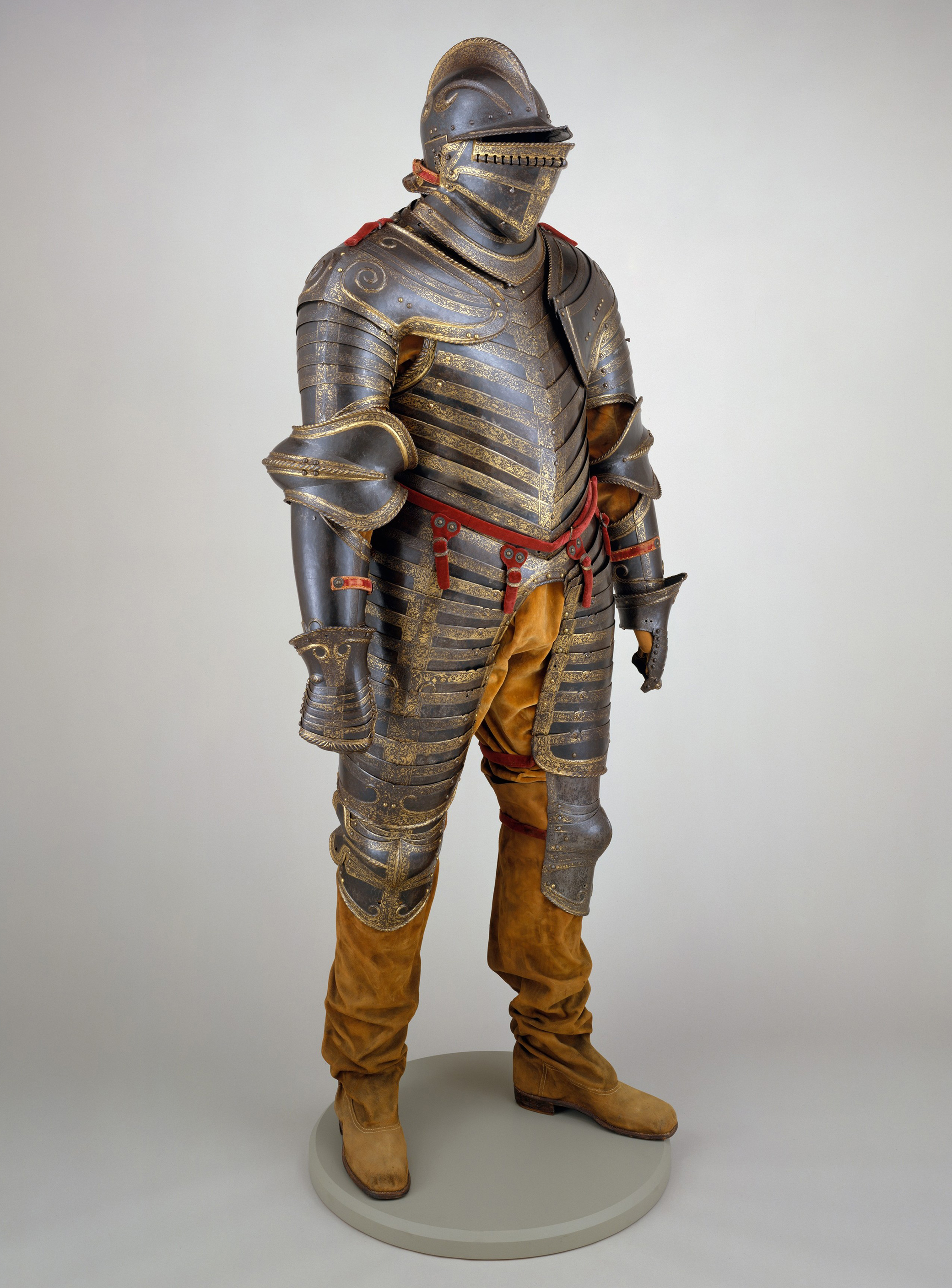
Field armor of King Henry VIII of England, c. 1544. The Metropolitan Museum of Art, Harris Brisbane Dick Fund, 1932.
• “In fourteenth-century England, one of the only ways a woman could get a divorce was if her husband was impotent. But first, she had to prove it in court.” (Narratively)
• Gout: it’s back. (T: The New York Times Style Magazine)
• “The first U.S. museum was devoted to truth and reason. Then the circus came to town.” (Nautilus)
• Found: medieval remains in a Lithuanian lake. “Personal belongings found nearby, including a sword, well-preserved leather boots and two knives, suggest that the remains belonged to a medieval soldier.” (Lithuanian Radio and Television)
• “The Victorian era in England was the golden age of pigeon-fancying, along with other nature manias, like aquarium-keeping, fern-collecting, and taxidermy. Victorians were mad for pets, from the mice kept by the very poorest, to the exotic pets—koalas, badgers, bears, monkeys—favored by the rich.” (JSTOR Daily)
• “Team discovers Ancestral Puebloans survived from ice melt in New Mexico lava tubes.” (University of South Florida)
• “We can now confirm that these three leather balls from Yanghai are the oldest leather balls in Eurasia.” (Atlas Obscura)
• “In the four decades before the Civil War, an estimated several thousand enslaved people escaped from the south-central United States to Mexico. Some received help—from free Black people, ship captains, Mexicans, Germans, preachers, mail riders, and, according to one Texan paper, other ‘lurking scoundrels.’ Most, though, escaped to Mexico by their own ingenuity. They acquired forged travel passes. They disguised themselves as white men, fashioning wigs from horsehair and pitch. They stole horses, firearms, skiffs, dirk knives, fur hats, and, in one instance, twelve gold watches and a diamond breast pin. And then they disappeared. Why did runaways head toward Mexico?” (NewYorker.com)
• Read an unpublished story by Edith Wharton. (TheAtlantic.com)
• “Franz Brentano, philosopher and psychologist, was an iconic teacher eclipsed by his students, Freud and Husserl among them.” (Aeon)
• “Graves from a lost segregation-era Black cemetery might have been discovered on MacDill Air Force Base. This would be the fifth lost cemetery found in the Tampa Bay area over the last sixteen months.” (Tampa Bay Times)
• This week in obituaries: Lee Hyo-jae, Frederick Weston, Andrew White, Masatoshi Koshiba, Nelly Kaplan, Edward J. Perkins, Julia O’Faolain, François Catroux, Irvin Baxter, Bruce Swedien, Drew Days, Anthony Hill, and Bruno Barbey.